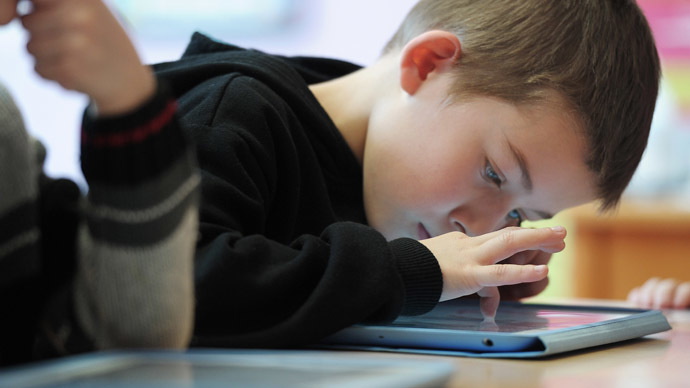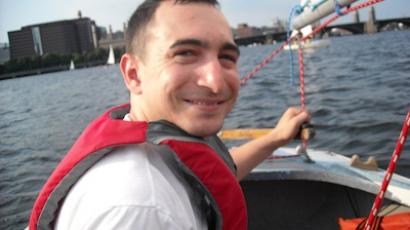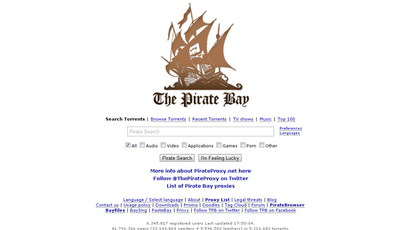Anti-piracy curriculum for elementary schools decried as ‘propaganda'

Content-industry giants and internet service providers are teaming up to produce multi-grade elementary school curriculum which will denounce copyright infringement.
The likes of the Motion Picture Association of America (MPAA),
the Recording Industry Association of America (RIAA), AT&T,
Verizon, Google, Microsoft, Facebook, and Comcast are behind the
pilot project which will be tested in California elementary
schools later this year.
The curriculum, called “Be a Creator,” is not quite
complete, producers say, though Wired was able to obtain the
various levels of content - from kindergarten to sixth grade -
which aim to communicate that copying is theft.
“This thinly disguised corporate propaganda is inaccurate and
inappropriate,” said Mitch Stoltz, an intellectual property
attorney with the Electronic Frontier Foundation who reviewed the
material.
“It suggests, falsely, that ideas are property and that
building on others’ ideas always requires permission,” Stoltz
says. “The overriding message of this curriculum is that
students’ time should be consumed not in creating but in worrying
about their impact on corporate profits.”
The content was made by the California School Library Association
and the Internet Keep Safe Coalition. The Center for Copyright
Infringement commissioned the material. The center’s board is
made up of executives from MPAA, RIAA, Verizon, Comcast, and
AT&T.
Each grade’s package includes a short video and a teacher
worksheet of talking points.
For example, the sixth grade version urges children to realize
that copyright infringement can have worse consequences than
cheating on a test, which usually results in a bad grade or
suspension from school.
“In the digital world, it’s harder to see the effects of
copying, even though the effects can be more serious,” the
teacher worksheet says.
The material does not comment on fair use, which allows for the
reuse of copyrighted works without permission. Rather, students
are told that using without permission is “stealing.”
The Internet Keep Safe Coalition, a non-profit organization
partnering with governments and major corporations like Facebook
and Google, said that fair use is beyond the comprehension of
sixth graders.
The curriculum “is developmentally consistent with what
children can learn at specific ages,” the group’s president,
Marsali Hancock, told Wired, adding that materials for older
children will include the concept.
A video for second graders shows a child taking photos and
debating whether to sell, keep, or share them.
“You’re not old enough yet to be selling your pictures online,
but pretty soon you will be,” reads the teacher lesson plan.
“And you’ll appreciate if the rest of us respect your work by
not copying it and doing whatever we want with it.”
The groups involved in the curation of the material stressed that
it was in draft form at this point, and that some wording will be
changed before the pilot project begins in schools.
“We’ve got some editing to do,” said Glen Warren, vice
president of the non-profit California School Library
Association.
Warren alluded that the Center for Copyright Information (CCI), a
content-industry group, has already had influence on the project.
Hancock said the material has not yet been approved by CCI. The
group is best known for working with the government and rights
holders to begin an internet monitoring program with large ISPs
that punish violators with extrajudicial measures like temporary
internet termination and weak connection speeds.
CCI’s executive director, Jill Lesser, has alluded to youth
education programs in the past.
“Based on our research, we believe one of the most important
audiences for our educational efforts is young people. As a
result, we have developed a new copyright curriculum that is
being piloted during this academic year in California,” she
said last week in a testimony on Capitol Hill.
“The curriculum introduces concepts about creative content in
innovative and age-appropriate ways. The curriculum is designed
to help children understand that they can be both creators and
consumers of artistic content, and that concepts of copyright
protection are important in both cases,” Lesser testified.
She said that CCI’s board will likely sign off on the curriculum
soon.
“We are just about to post those materials in the next week or
two on our web site,” Lesser told Wired.
The first grade lesson plan puts content sharing on par with
theft.
“We all love to create new things - art, music, movies, paper
creations, structures, even buildings! It’s great to create - as
long as we aren’t stealing other people’s work. We show respect
for other artists and their work when we get permission before we
use their work,” the material says. “This is an important
part of copyright. Sharing can be exciting and helpful and nice.
But taking something without asking is mean.”
The fifth grade lesson introduces the Creative Commons license,
though it distorts the legality of copying copyrighted works.
“If a song or movie is copyrighted, you can’t copy it,
download it, or use it in your own work without permission,”
the fifth grade worksheet reads. “However, Creative Commons
allows artists to tell users how and if their work can be used by
others. For example, if a musician is okay with their music being
downloaded for free - they will offer it on their website as a
‘Free download.’ An artist can also let you know how you can use
their work by using a Creative Commons license.”














